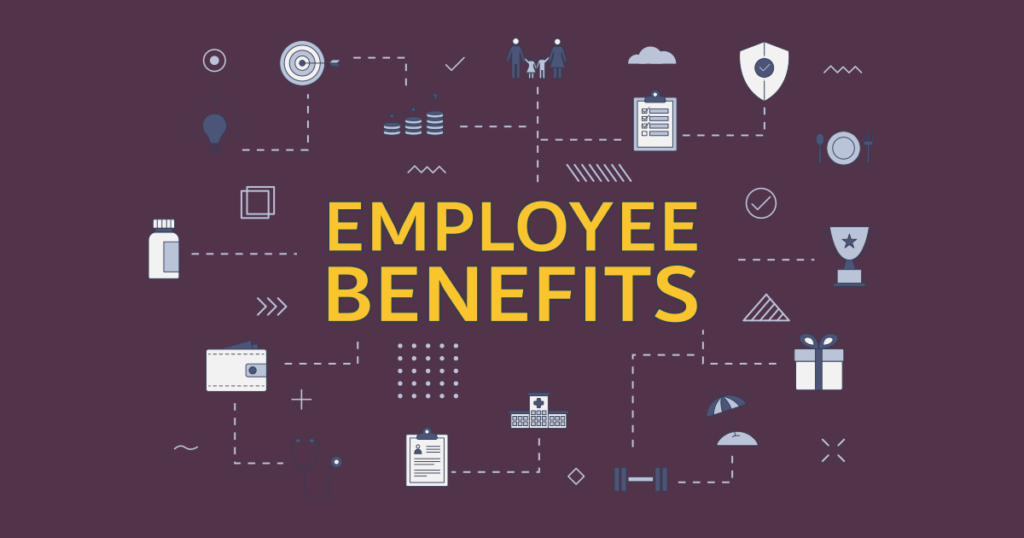Almost every employer agrees that staff are amongst their most valuable assets. What they need to know is that for the emerging employees of today, salaries are a threshold and not the ultimate result. There are many effective ways to keep your talent happy and engaged.
Company-sponsored perks are a major opportunity for most businesses to take full advantage of the appeal that non-monetary perks have for employees.
A recent study shows that almost 50% of employees would evaluate company benefits and work perks, in the decision to find their next job. This is also true when working with temporary workers since perks will more than likely determine if they stay after the assignment is done.
Here is a list of some company perks that can help engage and retain employees.
1. Employee Recognition
A practice of recognizing good work can be a simple email from the departmental head or CEO appreciating good work. We all feel good when we get a compliment. A simple thank-you or compliment can make your day. It can make you happier.
This is especially important for teams working with hybrid teams. Tokens of gratitude and recognition can make remote team members feel closer and connected.
A recognition program also helps retain staff as an employee that isn’t receiving recognition at work is more likely to leave.
2. Care and Appreciation
We all crave appreciation and want to know that our employers care about us. To make an impact, companies can express their appreciation beyond the standard paycheck and benefits package. Care packages on work anniversaries, birthdays, and other occasions can help improve employee engagement.
3. Childcare Assistance
Urban Pakistan is slowly moving towards both parents working in most young households. This means that quality childcare is rapidly becoming a necessity for millions of workers. Quality and reliable childcare costs can be expensive, and anything to help the problem is valuable. Getting child care assistance from companies may be the only way some families can afford child care and plan to grow their families.
Small businesses can pool together with neighboring businesses to have a childcare center, or at the very least have child/parent-friendly spaces where working parents can take care of their children in an emergency while working.
4. Wellness Program
The deskbound lifestyle expected from workers usually results in increased healthcare issues, low morale, and low production. Many companies use creative ways to fight this problem.
Workplace wellness programs are becoming a popular benefit for employers. Some wellness programs are simple, involving one-time activities like health screenings or steps-based contests. Others are full-scale wellness plans designed to change the workplace culture and encourage healthier behavior.
5. Home Office Budget
In the case of workplaces that continue to adopt hybrid and work-from-home options, it is advisable to offer staff a home budget option to get team members to get a home office space that helps them work.
This can be quality furniture like an ergonomic office chair, and all the necessities they need to stay productive. This may be expensive in a go but can be a huge perk for employees.
6. Office Socializing and Perks
Simple perks, like a snack table for the staff or a teatime buffet can be a facilitator for networking between departments, building social links, and even helping solve interdepartmental rivalries.
Weekly or monthly lunches are also another social interaction tool to build networking and team morale.
7. Healthcare Insurance
Public healthcare is a very distant possibility and the only option for Pakistanis is to get healthcare from their employers. Employer-sponsored coverage is a great perk that many employees would prefer over nominally high pay. Particularly post the pandemic.
The peace of mind that comes with knowing that you and your loved ones are covered in the event of a major accident or illness is great and cannot be competed with.
8. Vacation / Paid Time Off
Sabbaticals are becoming popular across the corporate world internationally. They can last between five weeks to longer for employees who have been with the company for at least three to five years. And while five weeks of fully or partially paid time off can look like a large chunk of unproductive time, it can pay off in terms of improved productivity once the staff returns.
9. Performance Bonus
The effectiveness of monetary incentives is limited, but that doesn’t mean that monetary incentives don’t work. The key is to link monetary rewards to the emotions that keep employees engaged with their work.
Performance bonuses are a great way to do this. By tying a reward to results, performance bonuses give employees a sense of ownership and control.
10. Paid Sick Days
Similar to Vacation or PTO, paid sick days give employees back their most valuable commodity – their time – while also letting them know that they are cared for and appreciated.
An added benefit? It sets the right tone to keep your office healthy during cold and flu season.
11 Flexible Schedule (Work From Home)
Flexibility is quickly becoming a desired perk for the modern employee, who is stuck balancing multiple personal and professional responsibilities,
It’s especially true for employees with children at home.
A flexible schedule – including the ability to work from home – is a necessity for these families, who need to be able to juggle multiple responsibilities.
Emotionally, giving employees flexibility in their schedule demonstrates that they are trusted partners (not just 9-5 workers chained to a desk), and leads to higher engagement.
12. Tuition Reimbursement
Tuition reimbursement helps solve two problems, the real and opportunity costs of studying. . Employees can both work and go to school, saving two ways in tuition fees and the opportunity costs of being unemployed.
13. Gym Membership
Sitting at a desk all day at work has a lot of negative long-term health effects, including increased risk of cardiovascular issues and cancer, as well as chronic conditions like Type 2 diabetes.
As an employer, the effect of the sedentary demands placed on workers includes increased health care costs and a less productive workforce. Many companies have ways to fight this problem.
If you don’t have space or money to invest in an onsite gym, there are many creative options to introduce physical activity into the workplace.
Hire a trainer or yoga instructor once or twice a week for group fitness classes at a nearby park or open space can provide a much-needed boost. Even something as simple as encouraging daily stretch breaks or walking meetings can have a tremendous impact.
But make sure that physical activities are not mandatory. Employees need to feel free to choose their level of engagement in these programs. Mandatory health programs can make employees feel that they are being dictated to and will diminish morale.

Sadia Zaheer holds a Masters in Business Administration from IBA, Karachi. After working in several financial institutions in Client Management, Corporate Lending, Islamic Banking and Product Management she jumped careers to pursue a career in writing.
She is a Finance, Business and HR Development writer with four years of experience. She reads a lot and takes care of her multiple cats to remain calm.




